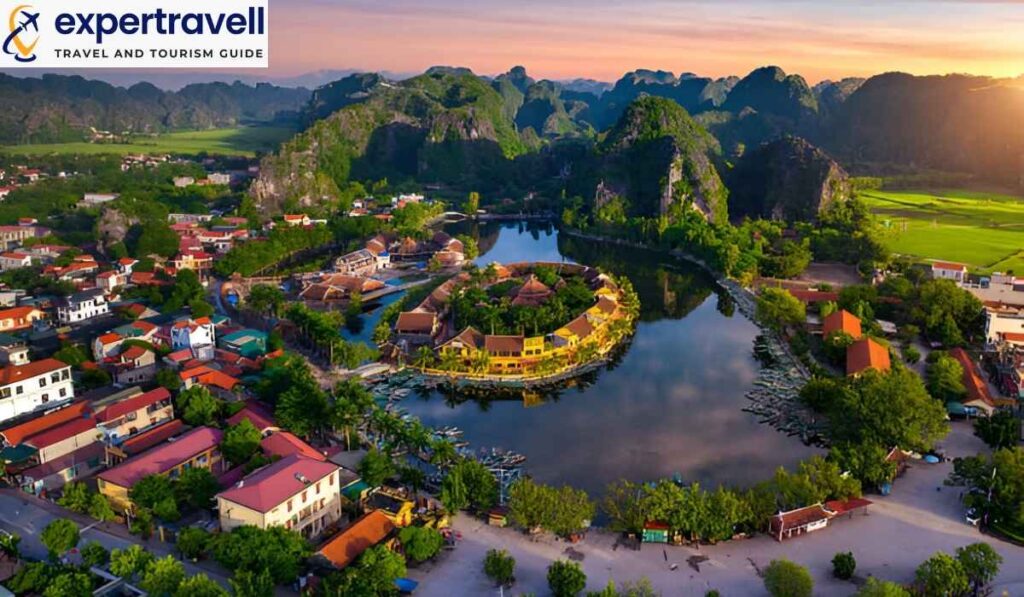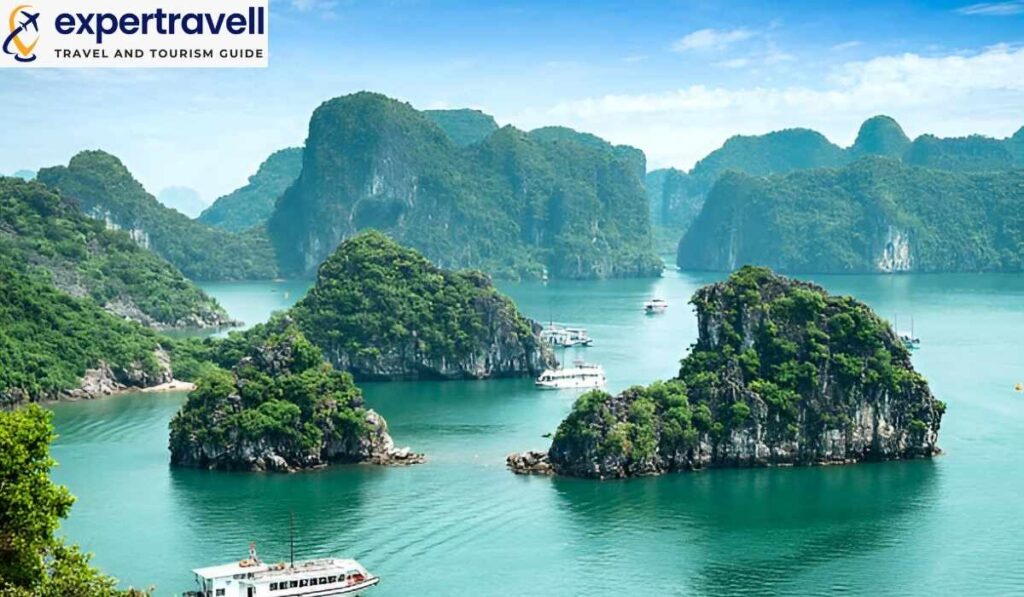Norway is a dream destination with stunning fjords, vibrant cities, and rich culture. First-time visitors can expect breathtaking landscapes and a mix of outdoor adventures and urban experiences, from hiking mountains to exploring Oslo’s museums. While Norway can be expensive, the unique experiences and natural beauty make it worth the cost. The local currency is the Norwegian Krone (NOK), so knowing the exchange rate is helpful.
Popular destinations like Flåm and Stavanger, Norway, offer travelers even more unforgettable experiences in this beautiful country.
Do You Need a Visa to Visit Norway?
Visa requirements for Norway depend on your nationality and the length of your stay. Some travelers need a visa, while others can enter visa-free.
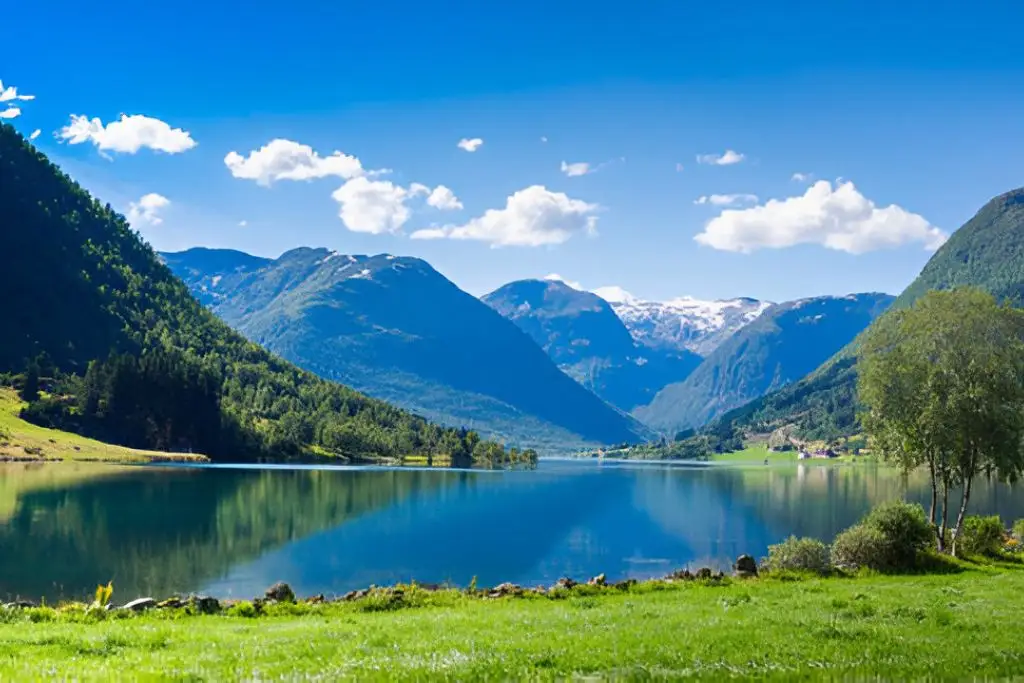
Visa Requirements for Different Nationalities
EU and EEA citizens can visit Norway for up to 90 days without a visa. Citizens from over 50 countries, including the US, Canada, Australia, New Zealand, and Japan, also enjoy visa-free travel for up to 90 days. Travelers from other countries need a visitor’s visa, requiring a valid passport, proof of funds, travel insurance, a reason for visiting, and plans to return home.
Schengen Zone Information
Norway is part of the Schengen Area, allowing visitors with a Schengen visa to travel within 26 European countries. The visa is valid for up to 90 days in a 180-day period, with both single-entry and multiple-entry options available. Visitors must follow passport checks at entry and exit points.
When Is the Best Time to Visit Norway?
Norway offers unique experiences year-round. The best time to visit depends on what you want to see and do. Each season has its own charm and attractions for travelers.
Seasonal Highlights
Summer brings long days and the midnight sun. This is perfect for outdoor activities and sightseeing. Temperatures are mild, usually between 60-70°F (15-21°C). Winter offers a chance to see the northern lights. Ski resorts are in full swing. Days are short, but the snow-covered landscape is beautiful. Spring and fall have fewer tourists. Prices are often lower. Spring brings colorful blooms and waterfalls. Fall showcases stunning autumn colors.
What Each Season Offers
Summer (June-August):
- Hiking and camping
- Fjord cruises
- Festivals and events
- Busy tourist season
Winter (December-February):
- Northern lights viewing
- Skiing and snowboarding
- Dog sledding
- Christmas markets
Spring (March-May):
- Blooming flowers
- Melting snow creates powerful waterfalls
- Fewer crowds
- Easter celebrations
Fall (September-November):
- Autumn colors
- Northern lights start appearing
- Harvests and food festivals
- Cooler temperatures for outdoor activities
Top Destinations in Norway
Norway offers stunning natural beauty and vibrant cities for visitors to explore. From fjords to mountains, historic towns to modern metropolises, there’s something for every traveler—even for those who love adventures like solo travel in Sydney, Australia.
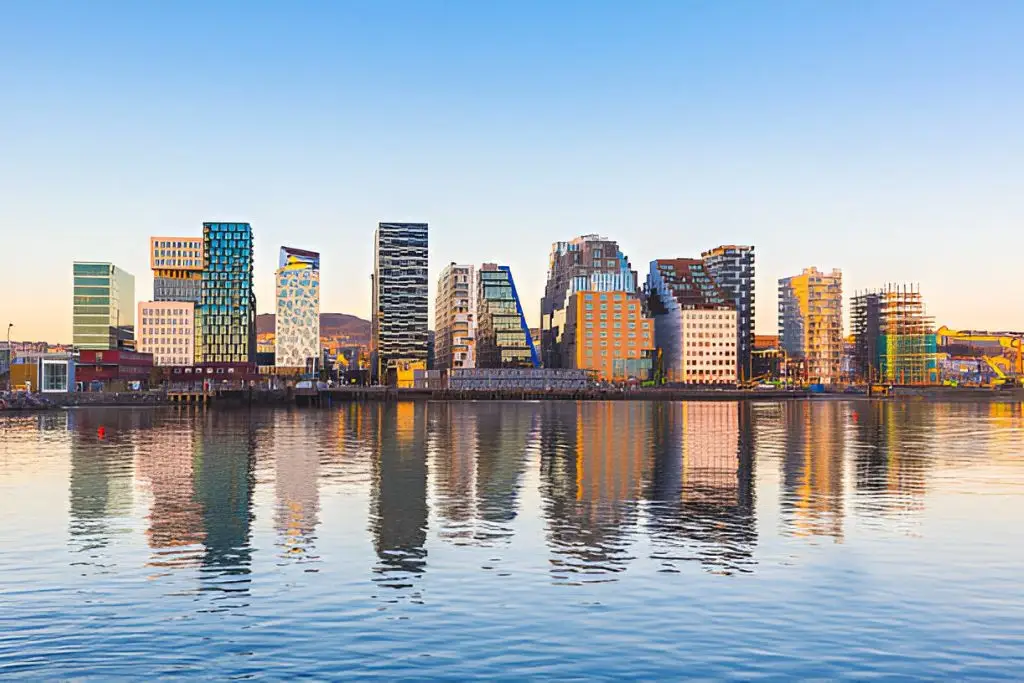
Oslo
Oslo blends urban life with nature. The city features iconic attractions like the Viking Ship Museum and Munch Museum, while the Oslo Opera House impresses with its architecture. Frogner Park’s sculptures and panoramic views from Holmenkollen Ski Tower are must-sees. For food lovers, Grünerløkka and Aker Brygge offer fantastic dining options.
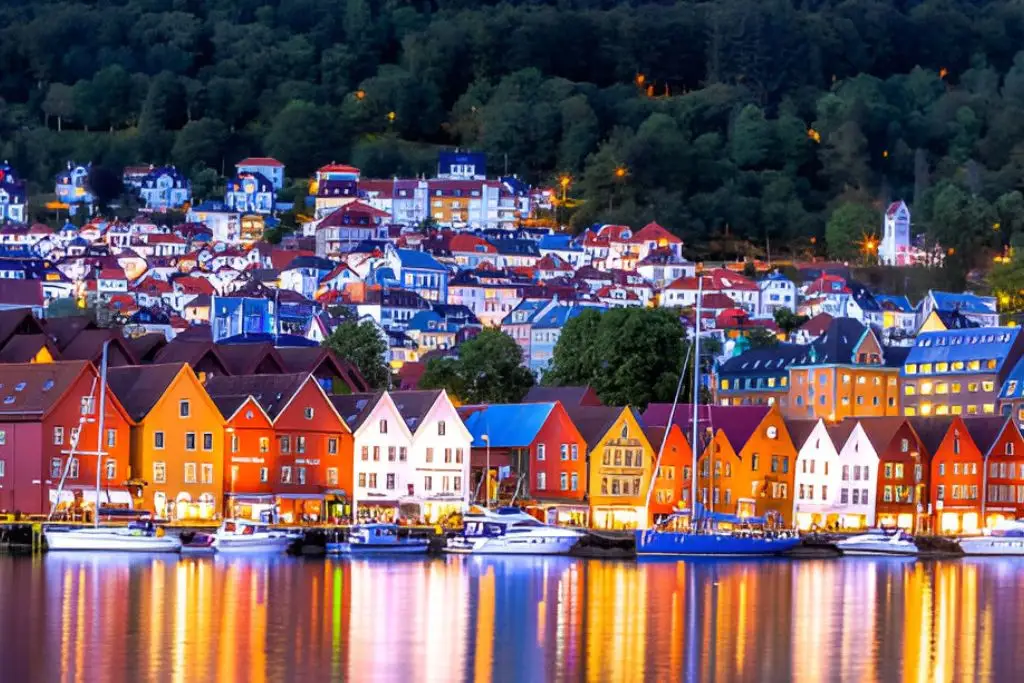
Bergen
Bergen captivates visitors with its colorful wooden houses and history. Explore Bryggen’s narrow alleyways and artisan workshops or enjoy fresh seafood at the Fish Market. The Fløibanen funicular offers sweeping city views, while Bergen serves as the gateway to the fjords, perfect for the Norway in a Nutshell tour.
The Norwegian Fjords
Norway’s fjords are world-famous, with Geirangerfjord and Nærøyfjord offering breathtaking views. Take a fjord cruise or ride the Flåm Railway for stunning vistas. Adventurers can hike to Pulpit Rock, which towers 604 meters above Lysefjord.
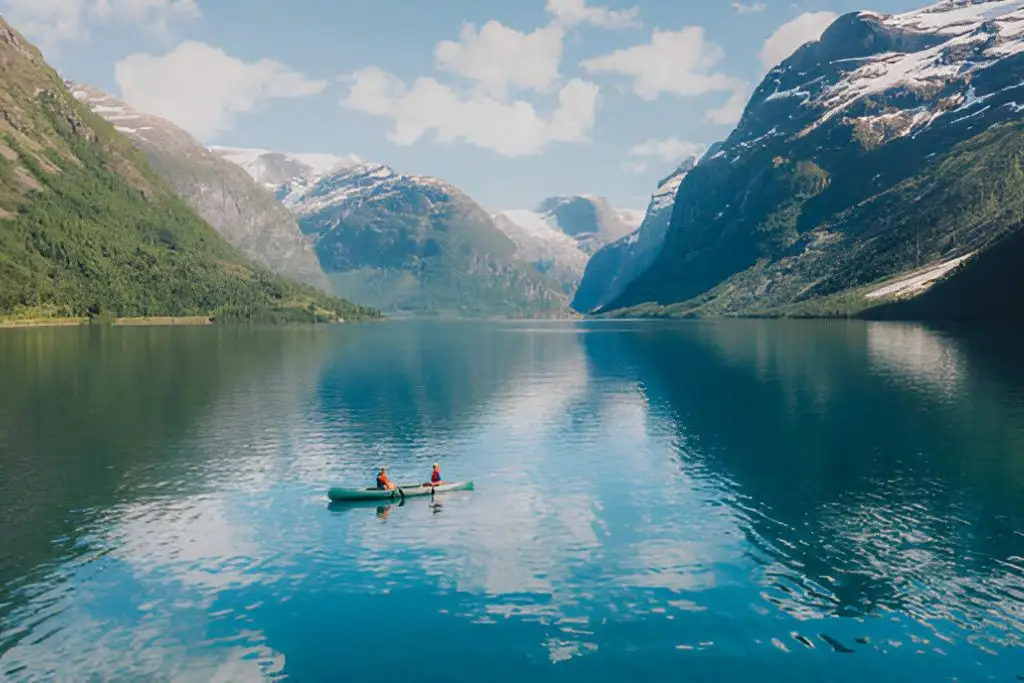
The Mountains of Norway
Norway’s mountains are ideal for year-round outdoor activities. In summer, hike Jotunheimen’s towering peaks, while winter brings top ski resorts like Trysil and Hemsedal. The Lofoten Islands combine rugged mountains with dramatic Arctic ocean views, offering excellent hiking and fishing.
Stavanger
Stavanger mixes old-world charm with modern attractions. Visit the Petroleum Museum or explore Old Stavanger’s white wooden houses. The city is a starting point for Pulpit Rock hikes and nearby beaches like Sola strand. Food enthusiasts can enjoy Stavanger’s lively culinary scene and the Gladmat food festival.
Trondheim
Trondheim offers a rich historical experience with the Nidaros Cathedral, a Gothic masterpiece. The colorful buildings along the Nidelva River and the Bakklandet neighborhood add charm. Visitors can explore music at Rockheim or natural history at NTNU University Museum.
Arctic Norway
Arctic Norway promises adventure, from viewing the Northern Lights in Tromsø to experiencing the Midnight Sun at North Cape. Explore Sami culture with reindeer sledding and visits to traditional camps. This region is a unique blend of culture and stunning natural beauty.
Other Noteworthy Cities
Ålesund showcases Art Nouveau architecture and offers stunning views from Mount Aksla. Kristiansand is a popular summer destination with its beaches and zoo. Fredrikstad’s Old Town transports visitors back in time with its cobblestone streets and historic buildings.
Norway’s Iconic Natural Phenomena
Norway’s unique location near the Arctic Circle creates amazing sky displays. Visitors can see colorful lights dance in the dark winter sky or enjoy bright summer nights.
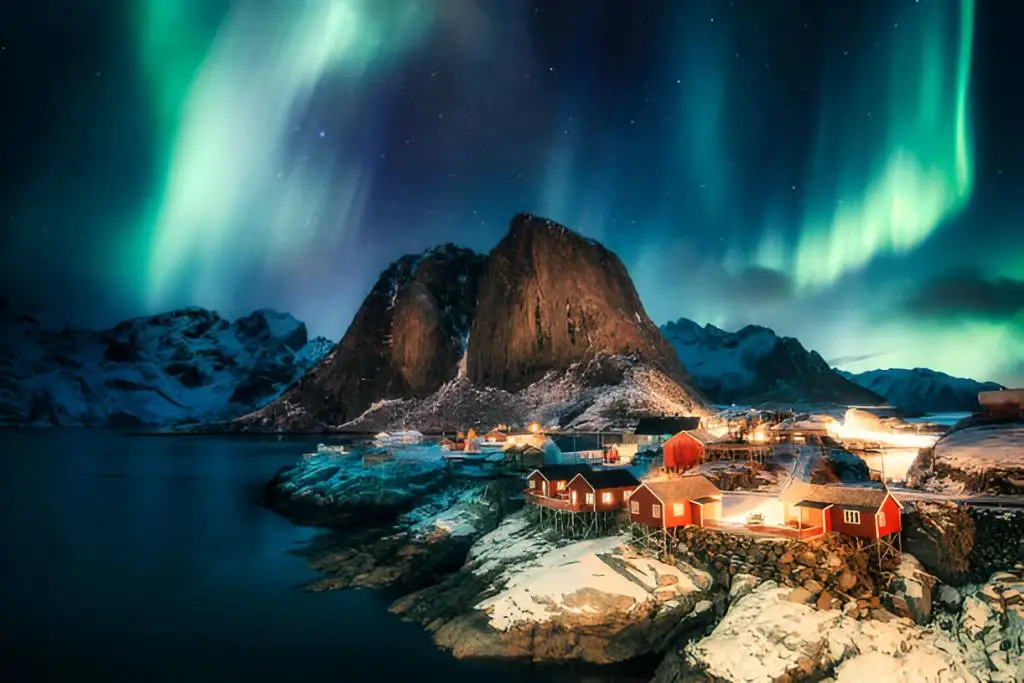
The Northern Lights
The Northern Lights are a stunning natural display in Norway, visible from late September to late March, especially in northern regions like Tromsø. Plan your trip during the winter months and stay away from city lights for the best views. The lights can appear in green, pink, or purple, dancing across the sky. Staying for several nights increases your chances of seeing this magical phenomenon.
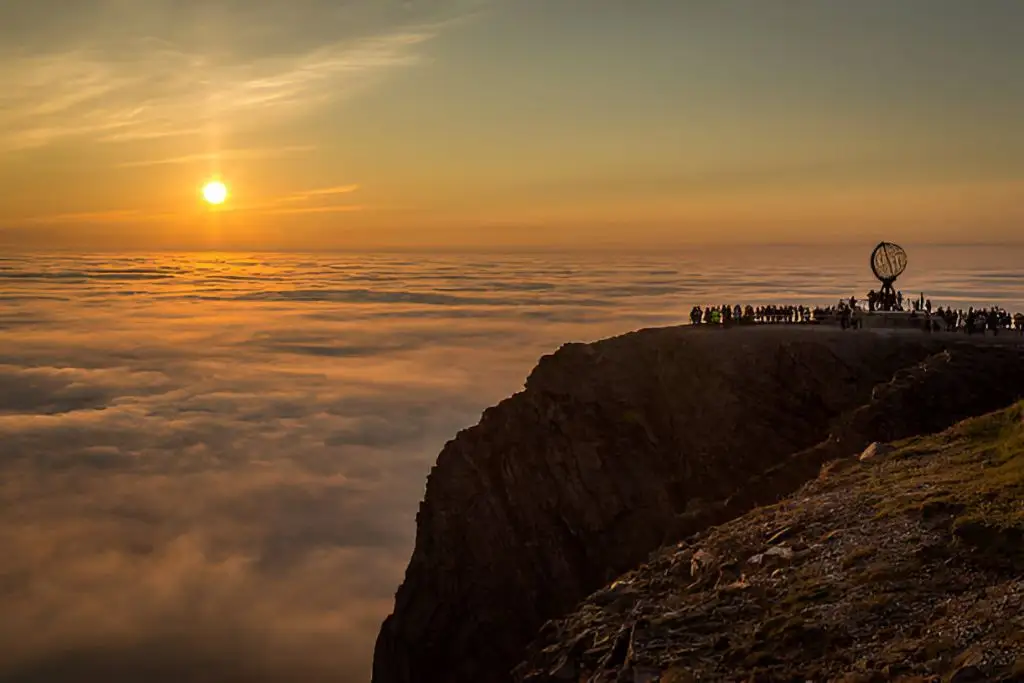
Midnight Sun
The Midnight Sun offers 24 hours of daylight from late May to late July in northern Norway, including the Lofoten Islands and North Cape. This allows for outdoor activities like hiking, fishing, and golfing at any time, even midnight. It’s a unique experience, showcasing Norway’s beauty in constant daylight.
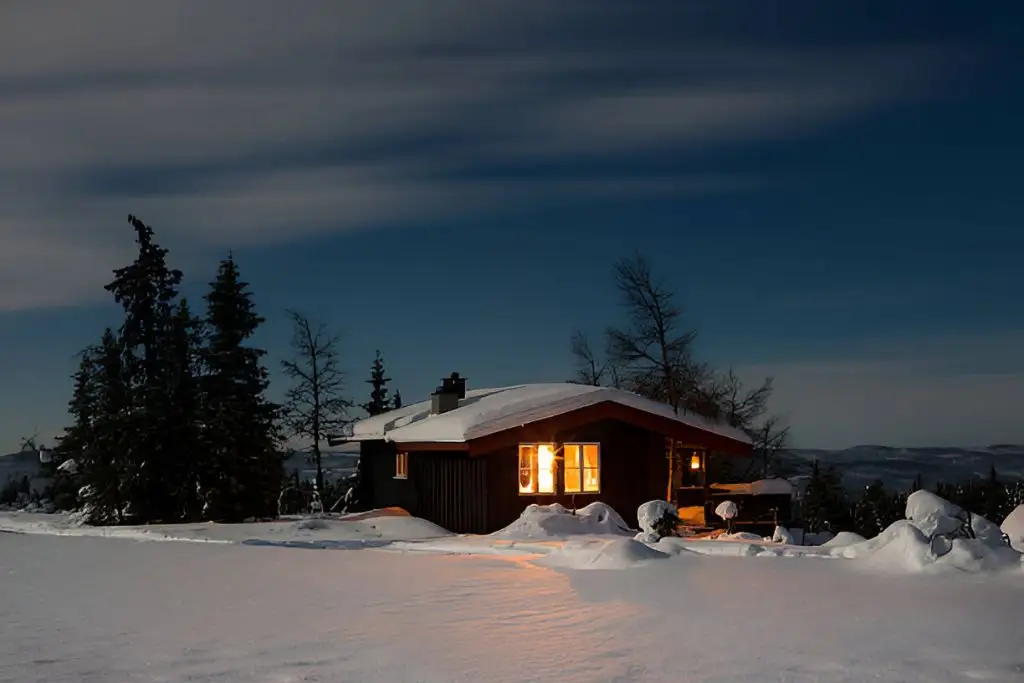
Polar Nights
From November to January, northern Norway experiences Polar Nights, where the sun doesn’t rise above the horizon. The sky glows with soft blue and purple tones, creating a magical twilight. This period is perfect for Northern Lights viewing and cozy indoor activities, with towns hosting festivals to celebrate the unique atmosphere.
How to Travel Around Norway
Norway offers diverse transportation options for visitors. Travelers can explore the country’s stunning landscapes and vibrant cities using various modes of transport.
By Train
Norway’s train system offers a comfortable and scenic way to explore the country. The Bergen Railway, connecting Oslo to Bergen, is famous for its stunning views. Trains frequently run between major cities, with options for standard and first-class seating. Tickets can be purchased online or at stations, with Norwegian State Railways (NSB) operating most routes. Train travel is ideal for those who prefer enjoying Norway’s landscapes without driving. Most trains provide free Wi-Fi and power outlets.
By Car/Road Trips
Renting a car allows flexibility to explore at your own pace. Major rental companies operate at Oslo Airport and other cities. Norway’s roads are well-maintained, though rural routes can be narrow and winding. Winter driving requires snow tires and caution. Popular road trips include the Atlantic Ocean Road and Trollstigen. Be aware that parking in cities can be expensive, and gas stations are sparse in rural areas. Electric car charging stations are widely available.
By Ferry
Ferries are essential for coastal and fjord travel. The Hurtigruten ferry provides a unique way to explore Norway’s coastline. Many ferries also carry cars, making combined road and sea travel possible. Ferry rides offer stunning views of coastal landscapes, with some routes, like Nærøyfjord, being top attractions. Schedules vary by season, and tickets can be purchased online or at terminals.
By Air
Domestic flights are a quick way to travel long distances, especially to northern Norway and Arctic regions. Oslo Airport is the main hub, with connections to smaller airports. Airlines like SAS, Norwegian, and Widerøe operate these routes. Booking early can save money, and air travel is a great option for reaching remote areas.
By Cruise
Cruises provide a unique view of Norway’s coastal beauty, with itineraries often including stops at fjords and scenic towns. Popular lines like Hurtigruten and Norwegian Cruise Line offer cruises focused on experiences like the Northern Lights. Cruises feature on-board amenities such as restaurants and educational programs, and shore excursions allow for deeper exploration of Norway’s culture and nature.
Practical Travel Tips for Norway
Norway has some unique aspects that visitors should be aware of before their trip. Knowing a few key things about language, money, and electronics will make your visit much smoother. For anyone exploring places to travel for beginners, Norway offers an ideal blend of adventure and accessibility.
Language
Most Norwegians speak excellent English. Road signs and public transport information are often in English too. Learning a few basic Norwegian phrases can be helpful:
- “Takk” – Thank you
- “Ja” – Yes
- “Nei” – No
- “Vær så snill” – Please
In rural areas, fewer people may speak English. Having a translation app on your phone can be useful in these situations.
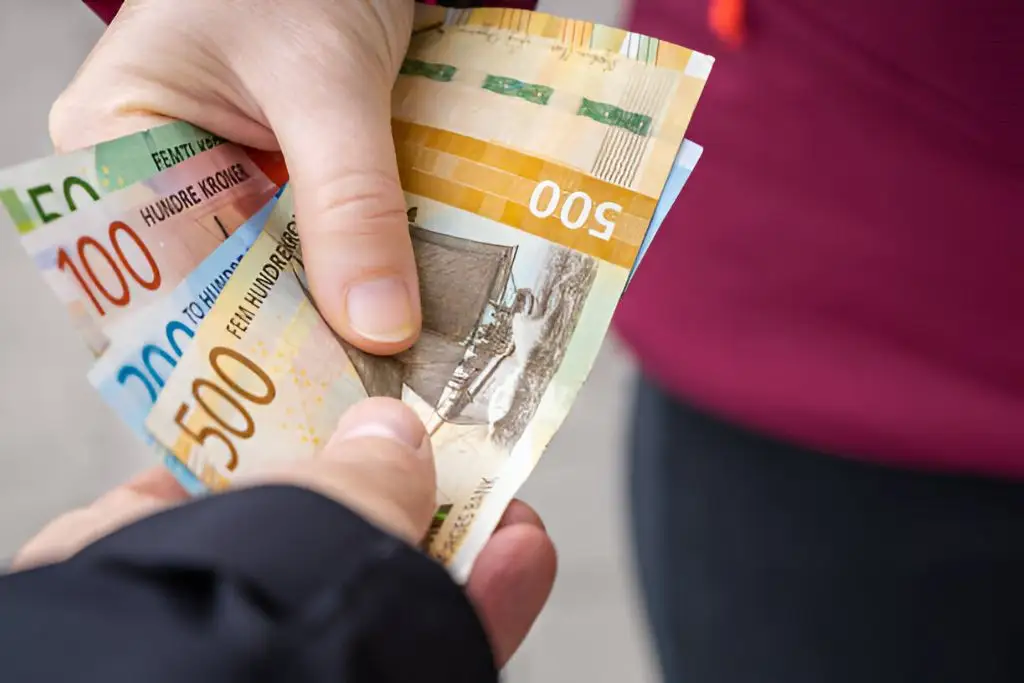
Currency and Payments
Norway uses the Norwegian krone (NOK). Credit cards are widely accepted across the country. Many places prefer card payments over cash.
Some tips for handling money in Norway:
- Get a small amount of cash for emergencies
- Use a card with no foreign transaction fees
- Inform your bank about your travel plans
- Avoid currency exchange booths at airports
Tipping is not required in Norway, but rounding up the bill is common for good service.
Power Adapters and SIM Cards
Norway uses Type C and Type F electrical outlets. The standard voltage is 230V with a frequency of 50Hz.
For electronics:
- Bring a universal adapter
- Check if your devices can handle 230V
- Consider a portable power bank for long days out
For staying connected:
- Buy a local SIM card for cheaper data
- Look for “pre-paid” options at convenience stores
- Free Wi-Fi is common in cities and towns
A VPN can be useful for accessing content from home and protecting your data on public networks.
Cost of Travel in Norway
Norway’s high prices can be a shock for first-time visitors. Careful planning and smart choices can help travelers manage expenses and enjoy this beautiful country without breaking the bank.
How to Manage the High Cost of Living in Norway
Norway is expensive, with prices higher than most European countries. A budget traveler should expect to spend around NOK 500 per day. To save on food, shop at budget supermarkets like Rema 1000 or Kiwi and cook your own meals. Public transportation is costly but reliable—day passes or advance train tickets can help reduce costs.
Budget Accommodation
Hostels are the cheapest, with dorm beds costing NOK 250-350 per night. Many offer kitchens to cut food costs. Wild camping is allowed in many areas, and renting an apartment can be more affordable for longer stays. Budget hotels start at NOK 600-800 for a basic room.
Money-Saving Tips for Sightseeing
Visit museums on free-entry days and consider buying the Oslo Pass for free transport and attraction entry. Enjoy Norway’s natural beauty for free through hiking and scenic drives. Off-season travel (October to April) often means lower prices, though the weather can be challenging. Package tours may also save you money on popular experiences like fjord cruises or Northern Lights trips.
Where to Stay in Norway
Norway offers a wide range of accommodations to suit different budgets and preferences. From cozy hotels to unique stays, visitors can find comfortable options in major cities and scenic locations across the country.
Types of Accommodation
Norway offers a range of accommodation options. Hotels are common in cities and towns, with choices from budget to luxury, often including free breakfast. Hostels are ideal for budget travelers, offering shared rooms and social spaces. Guesthouses and B&Bs provide a more personal touch. For longer stays, apartments or vacation rentals offer extra space and kitchen facilities. Camping is also popular in summer, with many campsites available.
Unique Stays
For a unique experience, try staying in traditional rorbu (fishermen’s cabins) found in coastal areas like the Lofoten Islands. Mountain lodges are perfect for hikers, offering cozy accommodations in stunning nature settings. In winter, ice hotels offer an unforgettable stay with rooms made of snow and ice. For a summer adventure, glamping in yurts or dome tents provides a luxurious outdoor experience with incredible views.
Top Hotels in Oslo, Bergen, and Stavanger
In Oslo, the Grand Hotel offers historic luxury, while The Thief provides modern comfort. Bergen’s Scandic Grand Tromso is a popular choice with vibrant rooms and a great breakfast. Stavanger has options for all budgets, including the central Thon Hotel Stavanger and the beachside Sola Strand Hotel for a unique coastal experience.
What to Pack for Norway
Packing for Norway requires careful consideration of the season and planned activities. The right clothing and gear will keep you comfortable in Norway’s varied climate.

Spring/Summer
Pack lightweight, breathable layers like t-shirts, long-sleeve shirts, and a light sweater. A waterproof jacket is essential as rain is common. Comfortable walking shoes are a must, and don’t forget shorts and a swimsuit for warmer days. Sunglasses and sunscreen are also necessary due to strong summer sun, especially in northern areas.
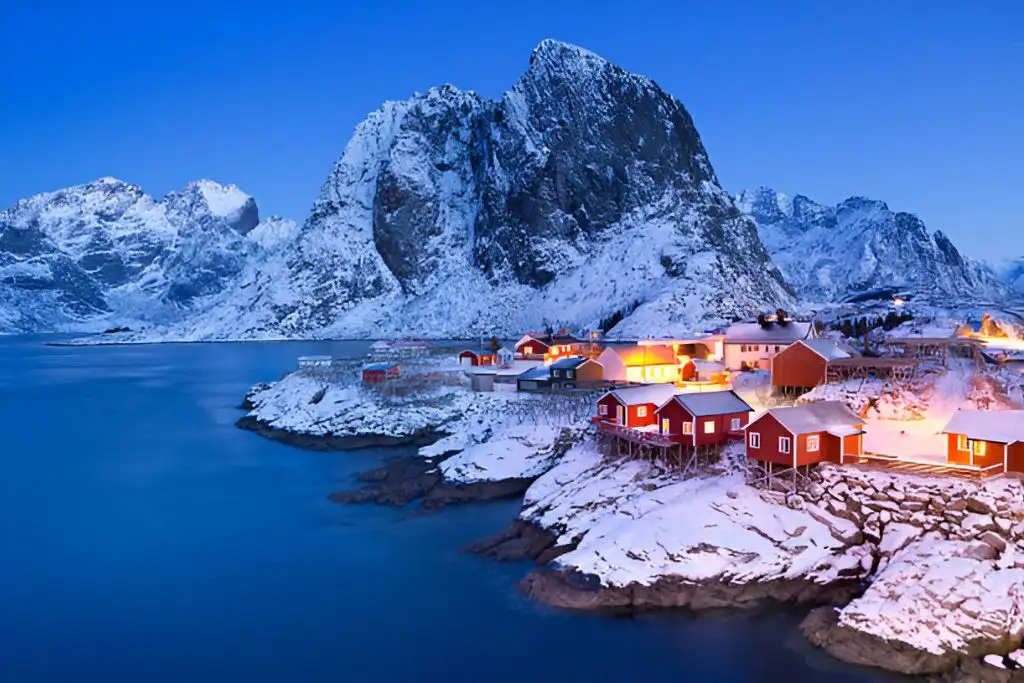
Fall/Winter
Warm, insulating layers are key. Pack thermal underwear, wool sweaters, a heavy coat, and waterproof, insulated boots for snowy conditions. Bring hats, gloves, scarves, and wool socks. A down jacket is perfect for layering warmth without adding bulk.
Special Items
For outdoor activities, pack sturdy boots, a backpack, and trekking poles. Northern Lights viewers should wear warm, dark-colored clothing and bring a tripod for photos. A reusable water bottle, power adapter, swimsuit for hot springs, and binoculars for wildlife watching are also useful.
Norwegian Cuisine for First-Time Visitors
Norway’s food scene offers unique flavors and traditional dishes that visitors should try. Local ingredients and cooking methods create memorable meals for tourists.

Traditional Foods
Norwegian cuisine is rich in seafood, with salmon being a popular dish, often smoked or cured as gravlaks. Reindeer meat, common in northern areas, is often used in stews. Brunost, a brown cheese with a caramel-like flavor, is enjoyed on bread or waffles. Fårikål, the national dish, is a hearty lamb and cabbage stew, while lutefisk, made from dried whitefish, is an acquired taste.
Where to Eat
In cities like Oslo, Bergen, and Trondheim, you’ll find a mix of traditional and modern cuisine. Coastal towns are ideal for fresh seafood, and food halls offer diverse options. For a special experience, try a farm-to-table restaurant serving seasonal, locally-sourced dishes.
Budget Options
Norway can be pricey, but street food markets, supermarkets, and university canteens offer affordable options. Hot dogs (pølse) are a popular cheap eat, and many restaurants offer lunch specials for a more budget-friendly way to sample local cuisine.
Outdoor Adventures in Norway
Norway’s stunning landscapes offer a playground for outdoor enthusiasts. From rugged mountains to deep fjords, the country provides endless opportunities for thrilling activities and breathtaking experiences in nature.
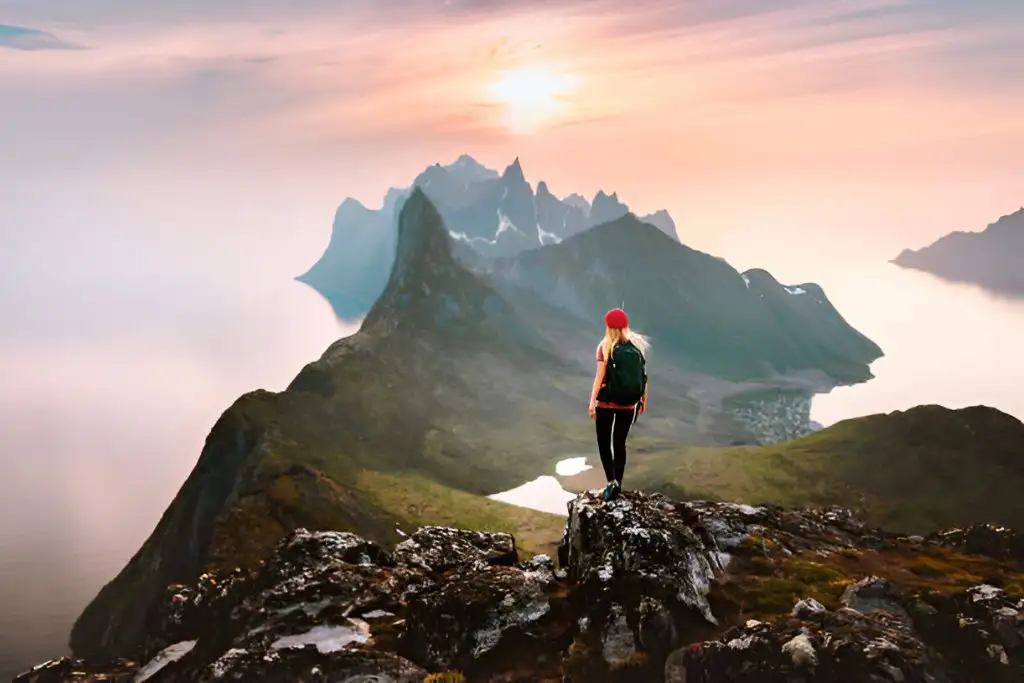
Hiking
Norway boasts an extensive network of hiking trails suitable for all skill levels. The country’s right to roam law allows hikers to freely explore its wilderness.
Popular hiking destinations include:
- Trolltunga: A challenging 28-kilometer round trip with spectacular views
- Preikestolen (Pulpit Rock): A 4-hour hike with a stunning fjord outlook
- Kjeragbolten: Famous for its wedged boulder, offering a thrilling photo opportunity
Hikers should pack proper gear, including waterproof clothing and sturdy boots. It’s wise to check weather conditions and inform others of your plans before setting out.
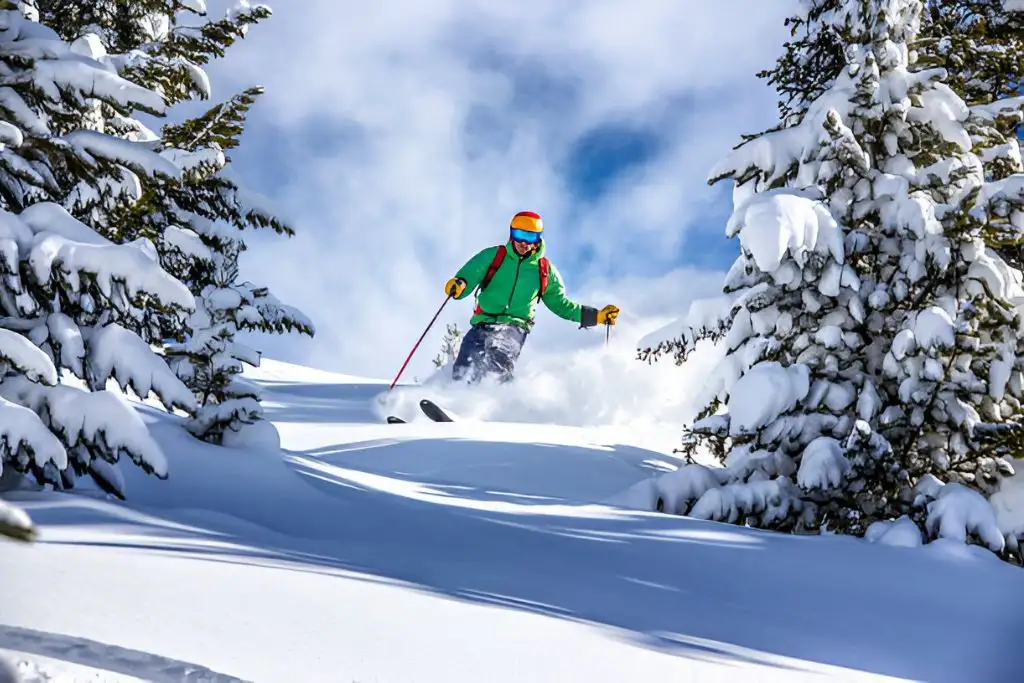
Skiing
Norway’s snowy winters create ideal conditions for skiing. The country offers both alpine and cross-country skiing options.
Top ski resorts include:
- Trysil: Norway’s largest ski resort with 71 slopes
- Hemsedal: Known as the “Scandinavian Alps” with varied terrain
- Geilo: Family-friendly resort with gentle slopes
Cross-country skiing is deeply ingrained in Norwegian culture. Many cities, including Oslo, maintain groomed trails for easy access to this popular winter activity.
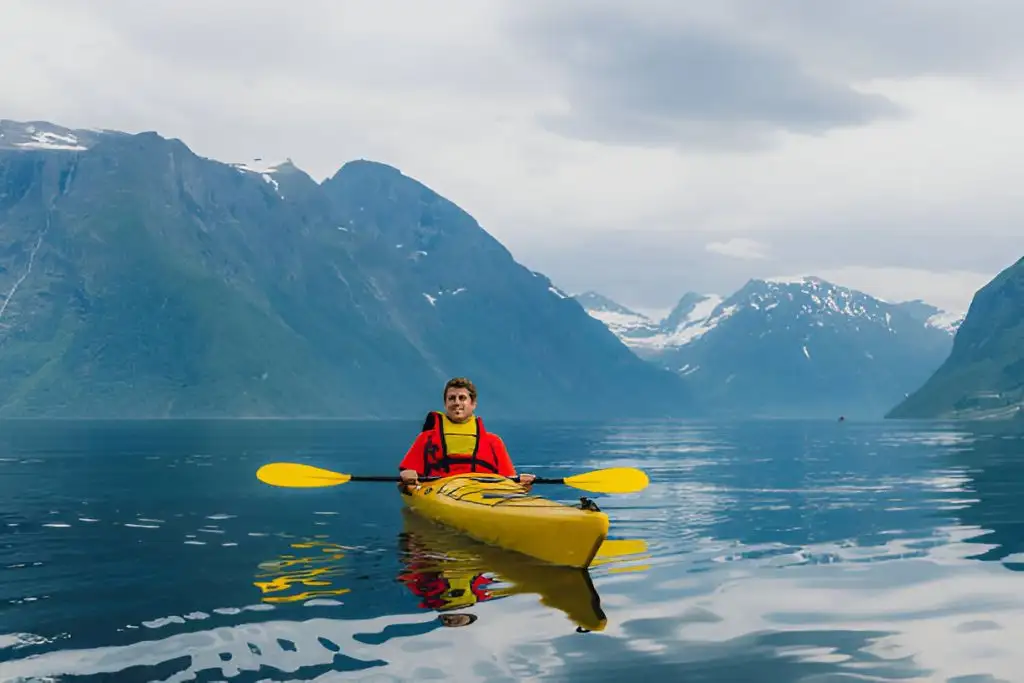
Kayaking and Fjord Exploration
Norway’s fjords provide a unique setting for kayaking adventures. Paddlers can glide through calm waters surrounded by towering cliffs and cascading waterfalls.
Popular kayaking spots include:
- Nærøyfjord: A UNESCO World Heritage site with narrow passages
- Geirangerfjord: Known for its dramatic scenery and Seven Sisters waterfall
- Lysefjord: Home to Preikestolen and Kjeragbolten
Guided tours are available for beginners, while experienced kayakers can rent equipment for solo expeditions. Safety briefings and proper gear are essential for a safe and enjoyable experience.
Glacier Hiking and Northern Adventures
Norway’s glaciers offer unique hiking experiences. Guided tours provide necessary equipment and expertise for safe glacier exploration.
Notable glacier hiking locations:
- Jostedalsbreen: The largest glacier in continental Europe
- Folgefonna: Offers summer skiing alongside hiking opportunities
- Nigardsbreen: An easily accessible arm of Jostedalsbreen
In northern Norway, adventurers can experience dog sledding and snowmobiling. These activities provide thrilling ways to explore the Arctic landscape and potentially spot the Northern Lights during winter months.

Norwegian Culture and Traditions
Norway’s culture is rich with ancient customs and modern practices. Viking history, festive celebrations, and unique social norms shape the Norwegian way of life.
Insights into Viking Heritage
Viking culture remains a significant influence in Norway today. Coastal communities continue the seafaring traditions through sailing and fishing. Viking museums display longships and artifacts, while festivals celebrate Norse mythology, which still inspires Norwegian art and culture.
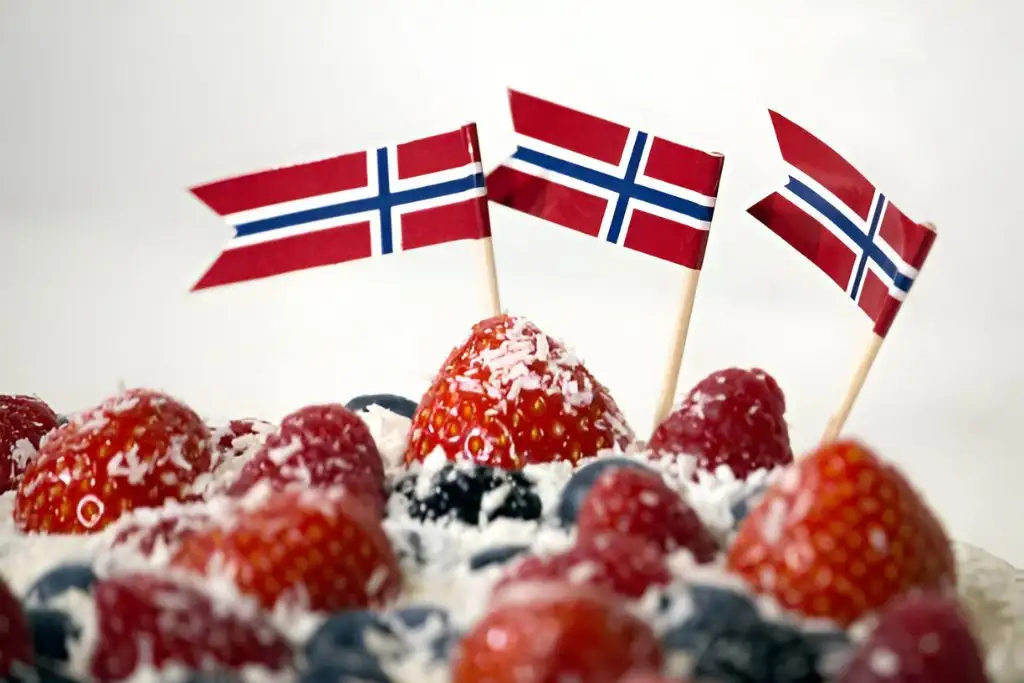
Festivals
Norway is home to many unique festivals. Constitution Day on May 17th is the largest, celebrated with parades and traditional attire. Midsummer bonfires and extended Christmas celebrations are also key cultural events, showcasing the country’s festive spirit.
Etiquette
Norwegian etiquette values equality and humility, with personal space highly respected. Punctuality is crucial, and tipping is not customary, as service charges are included in bills.
Sustainable Travel in Norway
Norway offers many ways to explore while minimizing environmental impact. Visitors can enjoy the country’s natural beauty and support local communities through eco-friendly choices.
Eco-Friendly Travel Tips
Use Norway’s excellent public transport like the scenic Bergen and Flåm Railways to explore the country sustainably. Renting an electric vehicle is another eco-friendly option, with many charging stations available. Hiking and cycling are low-impact ways to enjoy the landscapes, and cities like Oslo and Bergen have bike-sharing programs for sustainable sightseeing.
Supporting Local Businesses
Dine at local restaurants to experience traditional Norwegian cuisine and support the local food culture. Stay at family-run guesthouses for an authentic experience while supporting local economies. Shopping at local markets helps artisans, and joining guided tours led by locals offers eco-friendly and immersive experiences.
Responsible Wildlife Viewing
Norway offers amazing chances to see animals in their natural homes. Watching wildlife can be fun and exciting, but it’s important to do it the right way.
Where to See Wildlife Ethically in Norway
The Svalbard archipelago is home to polar bears, while northern Norway offers sightings of reindeer and Arctic foxes. The fjords are great for whale watching, and puffins nest on cliffs in the Lofoten Islands. Always observe wildlife from a safe distance.
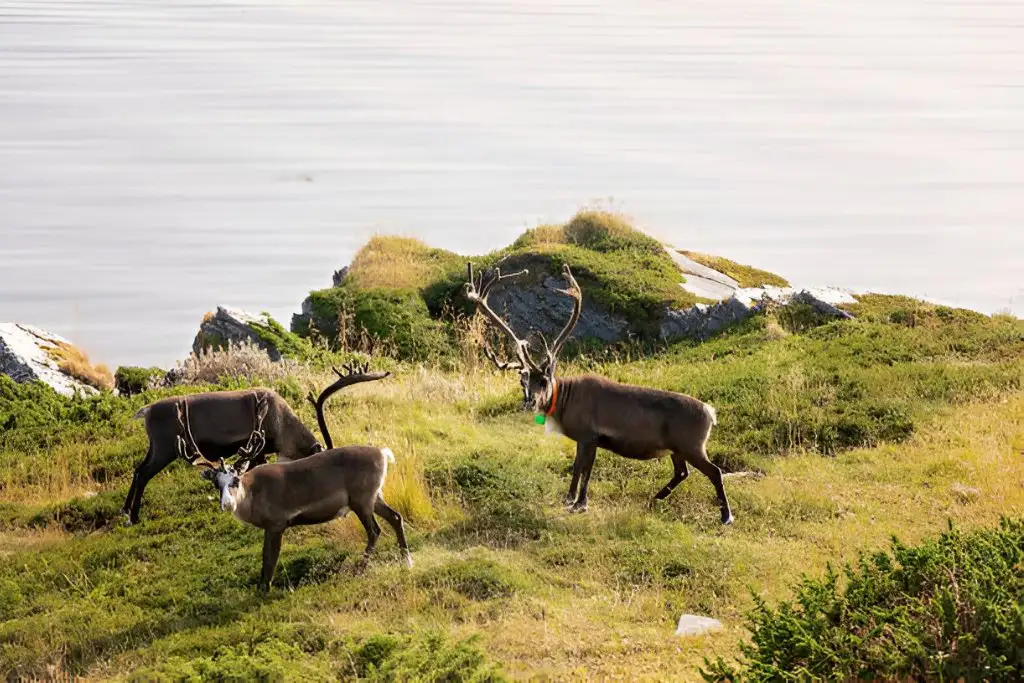
How to Watch Wildlife Ethically
Follow local guidelines, use binoculars or zoom lenses, avoid feeding animals, and remain quiet. Choose responsible tour operators and always respect the space wild animals need for their safety and yours.
Planning a Road Trip in Norway
A road trip in Norway offers stunning scenery and unforgettable experiences. Careful planning is key to making the most of your journey through this beautiful country.
Best Routes
The Atlantic Road is a top pick, spanning 8.3 kilometers of coastal islands with impressive bridges. Trollstigen, or Troll’s Path, offers 11 hairpin bends and stunning fjord views. For a longer trip, explore Norway’s 18 National Tourist Routes, which showcase the country’s diverse landscapes.
Scenic Drives
The Lofoten Islands offer dramatic mountains and ocean views along coastal roads. Geirangerfjord, a UNESCO site, provides cliffs, waterfalls, and perfect photo stops. The Hardangerfjord region is known for its springtime orchards and glaciers.
Renting a Car
Renting a car is straightforward but pricey. Book ahead, especially in summer, and choose the right vehicle for your route. Know the speed limits, use headlights day or night, and consider renting an electric car for eco-friendly travel.
A Helping Hand: Useful Resources
Norway offers many helpful resources for first-time visitors. These tools and contacts can make your trip smoother and more enjoyable.
Emergency Contacts
In Norway, dial 112 for police, fire, and ambulance services. For non-emergency police matters, call 02800, and for medical emergencies, dial 113. Pharmacies, called “Apotek,” are widely available. Contact your embassy in Oslo for consular assistance.
Apps for Travelers
The Entur app offers real-time public transport info, while UT.no is ideal for hikers with detailed trail maps. Google Translate helps with language, and Yr.no provides accurate weather forecasts. XE Currency is useful for quick conversions.
Guides for Travelers
David Nikel’s Moon Norway guidebook and the official Visit Norway website are excellent resources. The Norwegian National Parks website offers nature tips, and the Norway in a Nutshell guide is perfect for fjord tours.
Frequently Asked Questions
What are the top attractions for a first-time visitor to Norway?
Norway’s fjords, the Northern Lights, and Oslo’s museums and parks are must-see highlights for first-time visitors.
How should one plan an itinerary when visiting Norway for the first time?
Focus on key regions, mix nature and city experiences, and allow extra time for travel due to scenic but winding routes.
What are the travel requirements for visitors to Norway?
Visitors need a valid passport, and some may require a visa. US citizens can stay visa-free for up to 90 days but must have a passport valid for at least three months after departure.
How many days are recommended to experience Norway properly?
A 7-10 day trip is recommended for a first visit, while two weeks allows for more relaxed exploration of multiple regions.
When is the best season to travel to Norway for a memorable experience?
Summer is ideal for outdoor activities, while winter is perfect for Northern Lights and snow sports. Spring and fall are great for fewer crowds and scenic beauty.
How can visitors from the USA prepare for their trip to Norway?
Learn basic Norwegian phrases, pack layers for varying weather, and bring a reusable water bottle for Norway’s excellent tap water.


